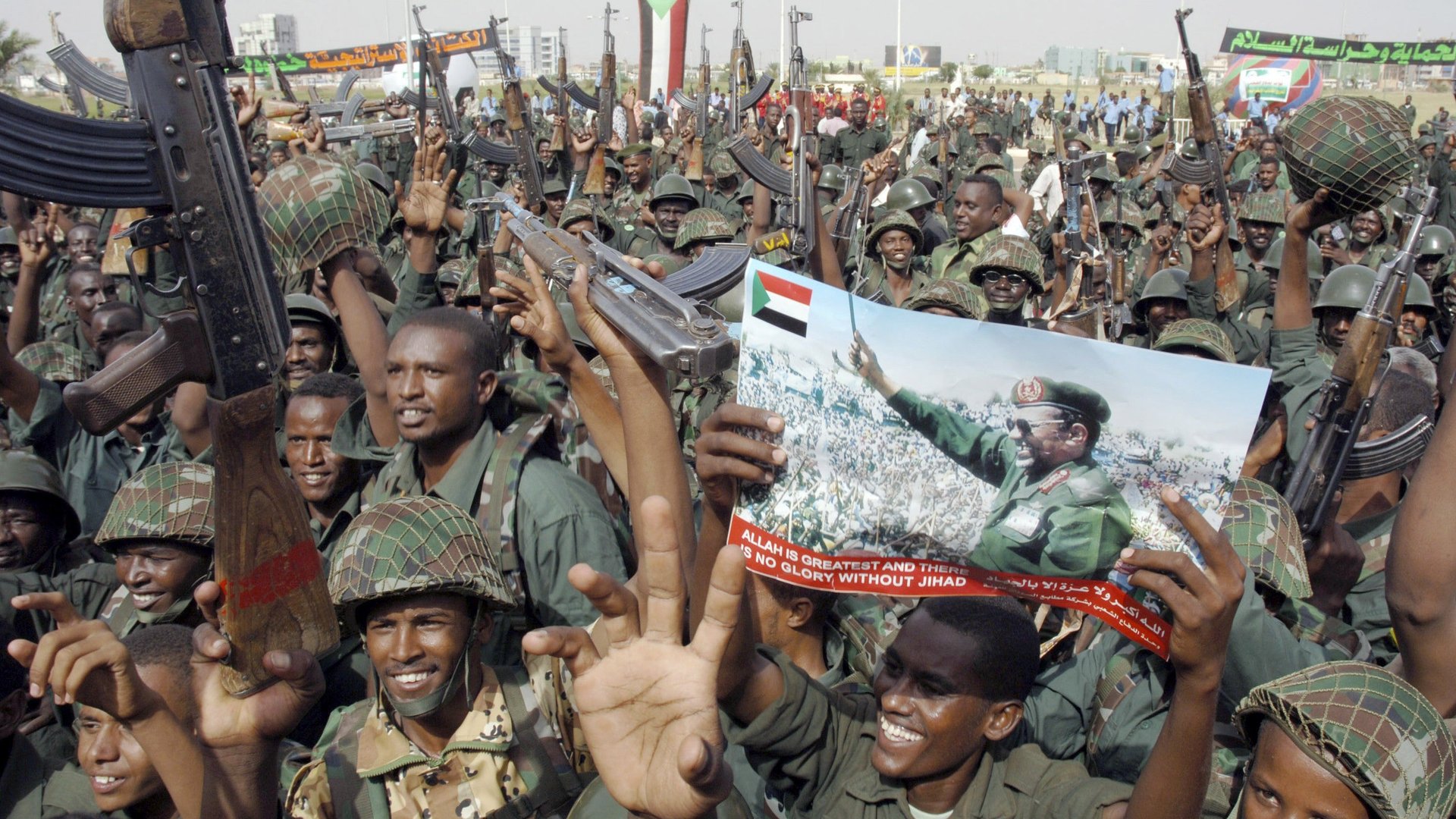Sudan could spend up to 70% of its budget on several war fronts this year
Sudan, depending on who you ask, will spend between 25% and 70% of its total budget for 2016 on war.


Sudan, depending on who you ask, will spend between 25% and 70% of its total budget for 2016 on war.
On paper, the government has budgeted 17 billion Sudanese pounds ($2.8 billion) for security and defense which takes up a quarter of its total budget. But in fact, economists and think tanks estimate the total spend will be much higher.
Regardless, allocating as much as one dollar in every four to war reflects a significant amount of military spending in a country where nearly half the population lives in poverty. That’s 25 times as much as Sudan plans to spend on health, and more than 10 times as much as it has allocated for education.
Sudan’s continued investment in war comes at a time when the Sudanese pound is at a record low against foreign currencies, and families across the country are queuing for hours to buy bread and flour as commodity prices surge. Meanwhile, millions of people in the country are displaced, largely from war.
Hazy Numbers
The government does not make public its annual budget of 67.5 billion Sudanese pounds—Nuba Reports obtained a copy through sources. That’s part of what makes identifying exact budget expenditure on defense a challenge.
Military expenditures often are hidden within other budgetary expenditures as well, Khartoum-based economists say. One area of the budget, for example, termed “emergency expenditure,” can comprise as much as 40% of the total budget with no indication of what this allocation is spent on.
According to The Sentry, an organization that monitors conflict funding in Africa, 70% of Sudan’s spending goes to the security sector, allowing the regime to maintain its capacity to wage multiple military campaigns simultaneously.
This potentially inflated budget allocation is necessary given the exorbitant costs of Sudan’s wars in Darfur, South Kordofan, and Blue Nile. Sudan spends roughly $4 million per day on warfare, estimates Siddiq Ombada, a former researcher at Mamoun Beheiry Centre for Economic Studies. Other economists have approximated both lower figures, at $2 million per day, and higher assessments, at $5 million per day.
According to the American University, the cost of the Darfur war alone from 2003 to 2009 was $30.5 billion.
Military expenditure has risen annually as the government relies increasingly on militias in conflict operations. Approximately 46% of all organized armed conflict is made up of civilian targeting by political militias – especially pro-government forces such as the Rapid Support Forces, according to the Armed Conflict Location and Event Data Project (ACLED), a security research project that monitors Sudanese conflicts.
Repeated cases of the Rapid Support Forces raiding and looting civilian populations for self-enrichment have plagued Sudanese government military operations.
“The militias that the government used and continues to use need a lot of financial resources,” said Dr. Hamid Ali, Associate Professor of Public Policy at the American University in Cairo, Egypt. “If the government doesn’t pay them, they make ends meet on their own by looting and robbing markets.”
Meanwhile, the 2016 budget leaves little for education and health—2.3% and 1% of the total spending, respectively. The scarce allocations are not new, according to Ali, who said they have stagnated at those levels for two decades.
A resident of the restive town of Geneina, West Darfur state, said government neglect is one of the regions the Darfur region has faced years of war.
“If the government focused less on funding war and more on funding people, I bet these rebellions across the country wouldn’t be here in the first place,” said the resident, who requested anonymity – for security reasons.
No matter the actual spending on war, Sudan President Omar al-Bashir said more is needed.
In a December speech at Sudan’s Air Force headquarters, Bashir said: “If 100% of the State’s budget was allocated to the army to secure the country, then that is still not enough.”